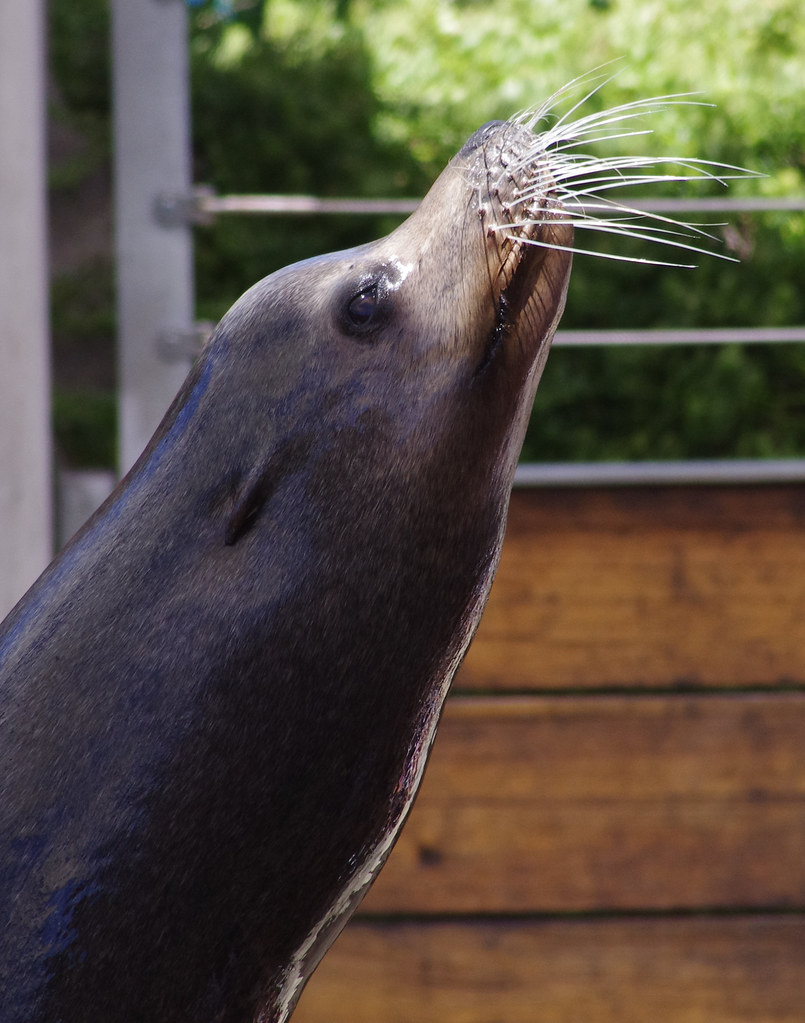
Seals belong to the pinnpeds family, which consists of 3 categories. The phocidae, the common seal, the otaridae, fur seals and sea lions the and odobenidae which are walruses. It is believed that there are around 33 seal species and a seal generally lives for 25 to 30 years. Basic Seal Species List

Seal by NAPARAZI from flikr. CC BY-SA
Some seals are carnivors and some are omnivores but their diet is mostly based on their region and the prey around them. Naturally, two groups of seals exist. One group is dubbed as true seals, which are also earless. The next group is referred to as fur seals. Examples of the true seals and the fur seals will be tackled in this section as well as their preferred habitats. Most seal species eat different fish, octopuses krill and shrimps. An exception is the Southern Elephant seal who eats mostly squids, and Walruses who eat generally mollusks.Weddell seals diet includes silverfish, codfish, octopuses, small crustaceans, prawns, and other creatures found in the marine waters. Contrary to their name, the crabeater seal does not depend mainly on crabs. Their primary diet is made of krill.Brown Fur Seal’s diet includes mackerel, crustaceans, African penguins, sardines, anchovies, and gobies.
This is an audio of a Lion Seal's (named Maggie) barks.
To find more on Seal Habitats and the effects Global warming has had on them: Seal Habitats and Global Warming Page.
Although seals spend the majority of their time in water, they can sleep in water or land. In the water, seals sleep in an upright position to float. Because they are not actively moving and are sleeping, seals can spend more time underwater, then when they are awake. Most of the time, seals do not sleep in the water for more than 15 minutes but there have been some rare cases of seals sleeping in the water for half an hour.

"REM is short for “rapid eye movement”, because humans in REM sleep move their eyes back and forth even though their eyelids are shut. REM sleep seems to be essential for most mammals’ health. If rats are deprived of REM sleep, they lose weight, suffer hypothermia, and eventually die. On land, the seals’ sleep consisted of both REM sleep and slow-wave (non-REM) sleep, with 80 minutes of REM sleep a day. In the water, their average amount of REM sleep fell to just 3 minutes a day. That’s less than the rats got during experiments on REM sleep deprivation. Unlike any animal studied before, the fur seals spent some time sleeping with their whole brain, and some time sleeping with half the brain like dolphins. The proportion of half-brain sleep increased from 62 per cent on land to 94 per cent in water. They may do this to watch out for predators like sharks and orcas, and to keep their nostrils above water to breathe. After being deprived of REM sleep, most mammals catch up by spending extra time in this phase of sleep. However, the fur seals showed little or no “rebound” when they returned to the land. They also showed no apparent ill effects from going without REM sleep for so long." From New Scientist.
Visit this link to learn more about Seals.
